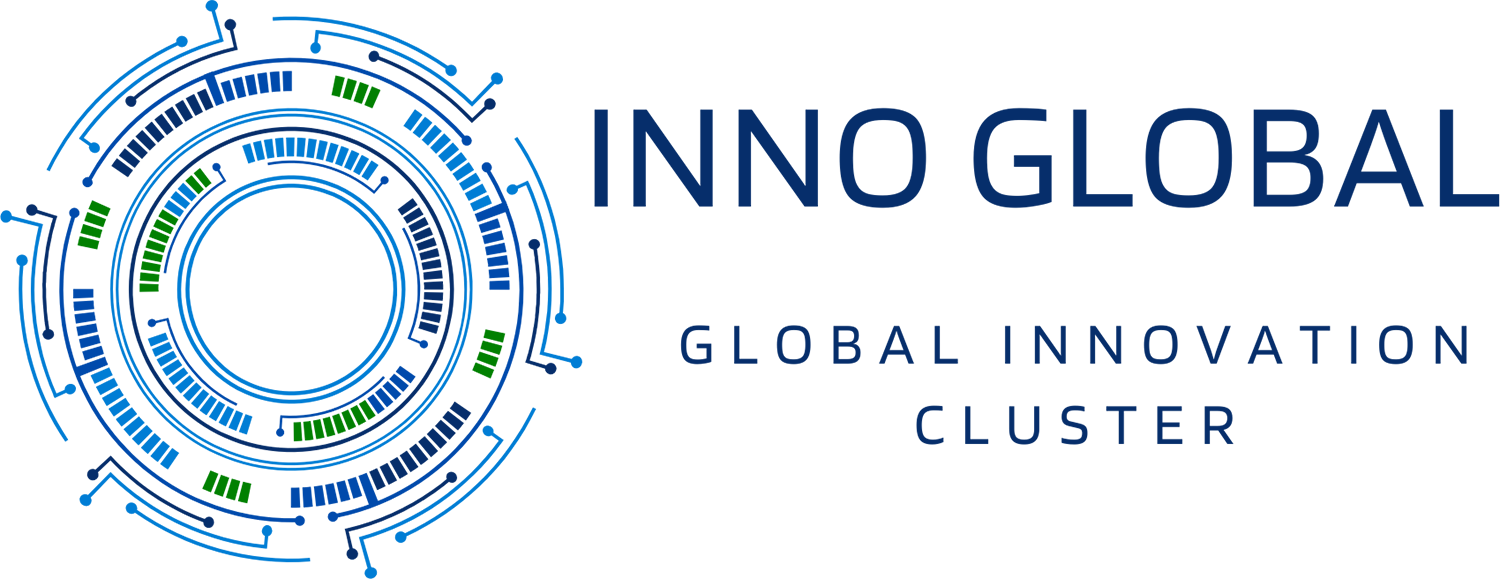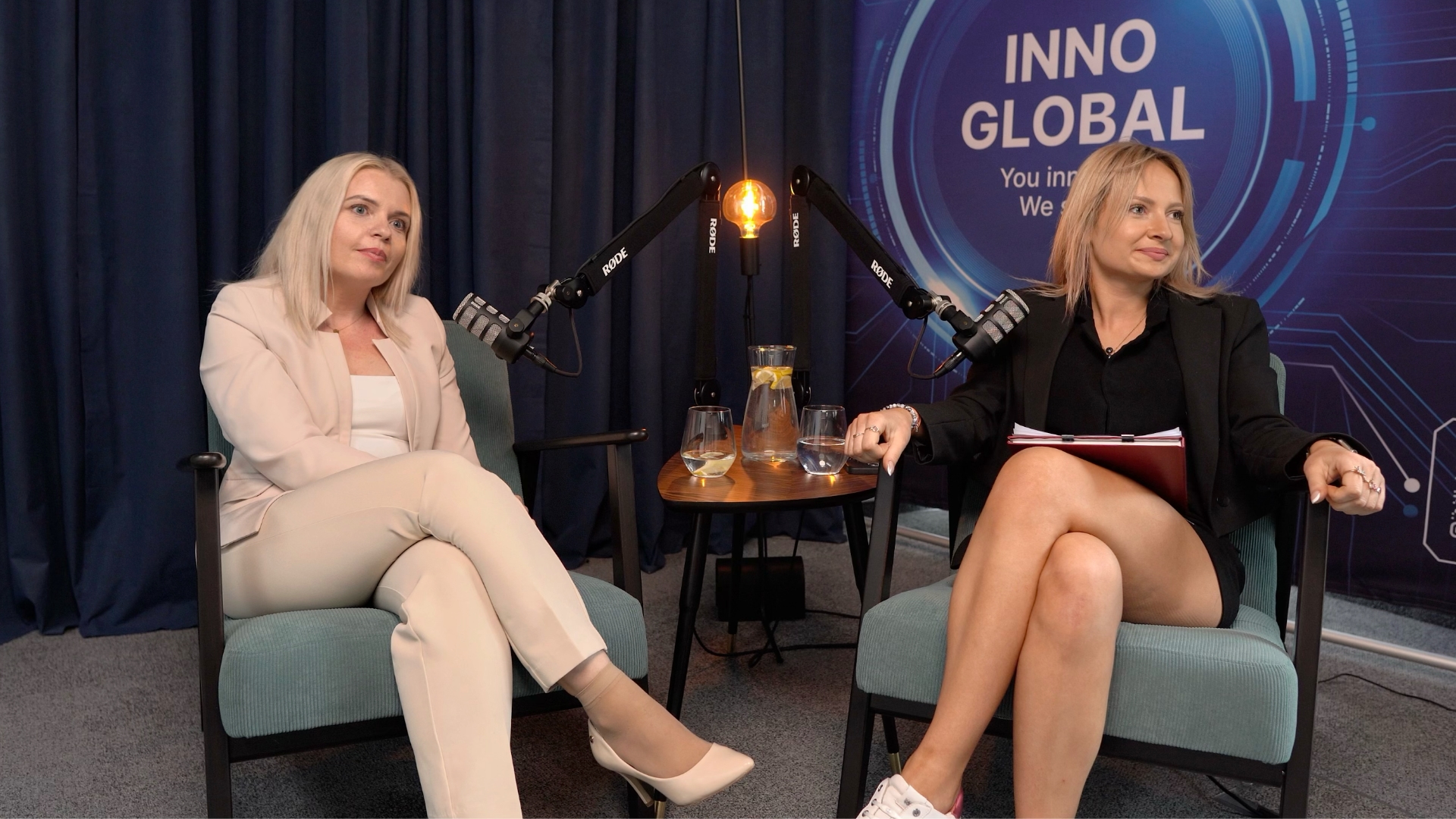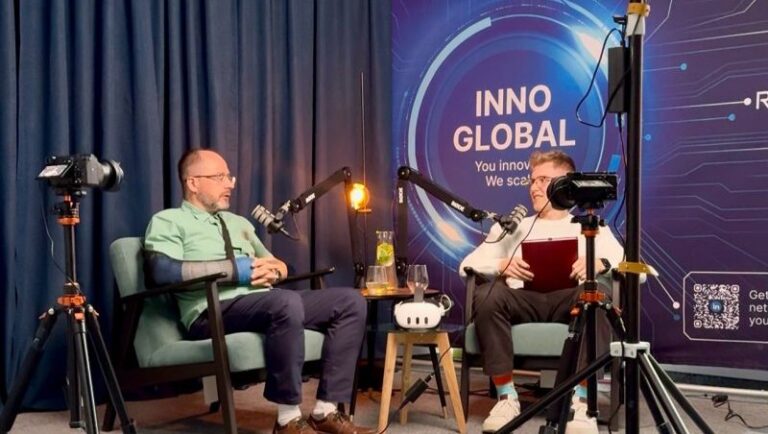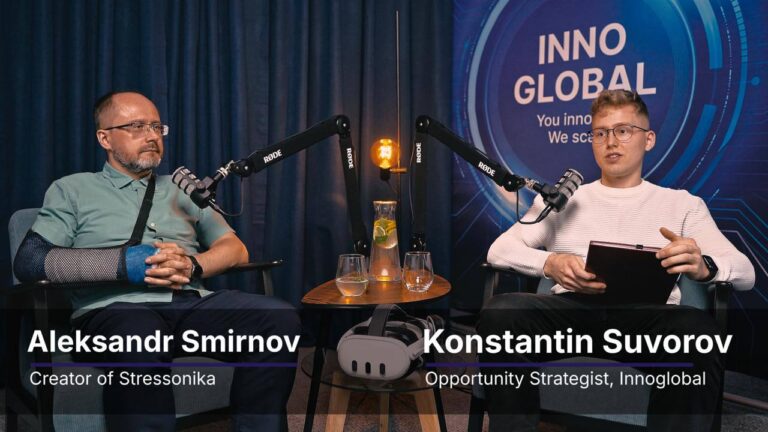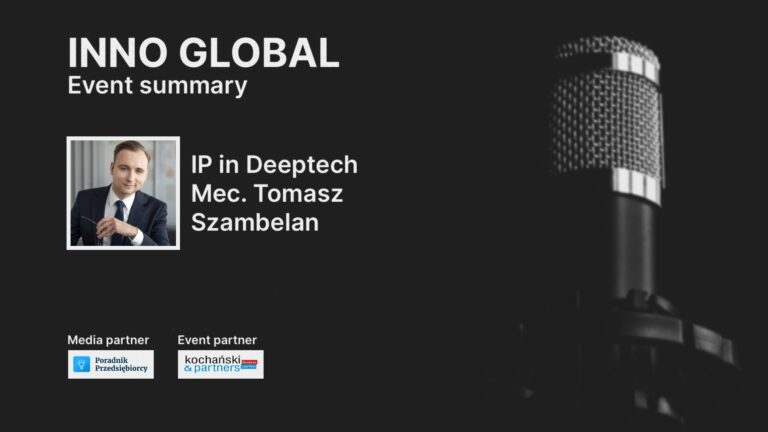How to Secure Funding for Your Company: Insights from an Expert Webinar
On April 15, 2025, Innoglobal Cluster hosted a webinar featuring Agnieszka Sadowska, an expert with nearly 20 years of experience in securing EU funds and financing innovation. As a certified R&D project manager, Sadowska shared practical advice for entrepreneurs aiming to obtain funding through competitive programs. This article summarizes key insights from the webinar, focusing on strategies for preparing applications, understanding program requirements, and managing funded projects.
Watch our videocast:
Where to Find Information on Funding Programs
Sadowska highlighted a central resource for funding opportunities: the portal funduszeeuropejskie.gov.pl. She noted that the website provides a user-friendly interface with detailed information on operational programs. Key features of the portal include:
- Comprehensive descriptions of all operational programs
- A searchable database of funding calls with filtering options
- Up-to-date schedules for upcoming calls
- Full application documentation
- An option to subscribe to a newsletter for updates on new funding opportunities
Additionally, she recommended checking the websites of managing institutions such as PARP, NCBR, the Ministry of Development, or BGK, which often provide supplementary materials and details about informational meetings.
Defining the Right Approach to Your Project
Sadowska emphasized the importance of starting with a clear understanding of your company’s needs before seeking funding. She advised entrepreneurs to ask, “What do we need?” rather than “What can we get funding for?” According to her, evaluation committees can easily identify whether a project was designed to meet a genuine business need or merely to fit a funding opportunity.
To strengthen a project’s foundation, she suggested:
- Ensuring the project addresses an authentic business need
- Confirming that the project meets a real market demand
- Identifying suitable funding sources only after defining these elements
Analyzing Funding Call Documentation
A critical step in preparing a funding application, as Sadowska explained, is thoroughly reviewing the call documentation. Incomplete understanding of requirements is a common reason for application rejections. She outlined three key areas to focus on:
- Program Objectives: Ensure the project aligns with the call’s purpose. For example, a call focused on production automation and digitalization will not fund a project centered on basic research.
- Evaluation Criteria: Assess how well the project meets the specified criteria for selection.
- Cost Eligibility Guidelines: Identify which expenses are eligible for funding under the program.
Sadowska recommended reading the documentation multiple times to catch all details, as overlooking requirements can undermine an application.
The Role of Innovation in Funding Applications
Innovation is a central requirement for most funding programs, Sadowska noted. She stated that without a clearly defined and substantiated innovation, a project is unlikely to secure funding, regardless of other strengths. To validate a project’s innovation, she proposed the following steps:
- Conduct a detailed analysis of competitors in the domestic and international markets.
- Identify features that make the solution innovative from the customer’s perspective.
- Quantify these features where possible to provide measurable evidence of innovation.
- Avoid claiming innovation that does not address a real market need.
She advised verifying whether similar products or substitutes already exist and assessing how the proposed solution meets an unmet need.
Timing of Investment and Key Considerations
Sadowska clarified an important rule for most investment programs: projects cannot start before the funding application is submitted. She defined the “start of investment” as the moment a legally binding commitment is made, such as:
- Signing a contract with a supplier
- Paying a deposit for machinery or equipment
- Entering into a construction contract
However, preparatory activities are permitted, including:
- Market research and collecting offers
- Developing a construction project
- Obtaining necessary administrative approvals
For R&D projects, Sadowska noted an exception: funding can support the continuation of previously started research, provided the project includes a development phase.
Securing Funding Sources for Your Project
Sadowska discussed the financial aspects of funding applications, noting that most grants are disbursed as reimbursements, requiring businesses to cover expenses upfront. She stressed the importance of demonstrating reliable funding sources in the application’s financial projections. Acceptable evidence includes:
- For self-financing:
- Financial history showing sufficient profits or EBITDA
- Financial statements confirming liquidity
- For bank loans:
- A loan commitment letter (if required)
- Documentation of a preliminary creditworthiness assessment
- For new entities:
- Evidence of alternative funding, such as a loan agreement from a parent company
She cautioned that declaring funding sources without proper backing can lead to issues during project implementation.
Characteristics of Strong Funding Applications
Sadowska shared insights into what makes a funding application stand out to evaluation committees:
- Specificity and Precision: Avoid vague descriptions and clearly define the project’s goals, product details, competitive advantages, and innovation features.
- Quantifiable Metrics: Highlight measurable innovative features that matter to customers.
- Project Coherence: Ensure all elements, especially in R&D projects, form a logical sequence, with clear methodology and milestones.
- Alignment with Company Profile: The application should reflect the company’s expertise and unique strengths. Sadowska cited an example of a toy manufacturer whose application failed to highlight its unique market position, industrial designs, trademarks, and eco-friendly technology.
- Thorough Compliance: Demonstrate a deep understanding of all program requirements through meticulous analysis of the documentation.
Challenges After Securing Funding
Sadowska explained that obtaining funding is only part of the process, accounting for approximately 60-70% of the overall effort. She outlined key challenges during project implementation:
- Financial Planning: Account for the reimbursement-based nature of grants in cash flow management.
- Vendor Selection: Adhere to the program’s competitiveness guidelines when selecting contractors.
- Separate Accounting: Maintain distinct project bookkeeping, ideally with a dedicated bank account, to ensure a clear audit trail.
- Payment Requests: Submit progress reports and updated schedules on time.
- Project Changes: Consult the managing institution before making modifications, though minor changes not affecting the original evaluation are often allowed.
- Promotion Requirements: Fulfill mandatory promotional activities, such as displaying information boards, updating the company website, and using EU logos.
- Team Training: Sadowska suggested training the project team after funding approval to ensure alignment with goals and requirements.
Emerging Trends in Funding Programs
Sadowska concluded the webinar with observations on future funding trends, based on current EU policies:
- Continued EU funding for businesses in upcoming financial perspectives.
- Ongoing emphasis on R&D and innovation implementation.
- Increased focus on collaboration between academia and industry, with potential incentives for such partnerships.
- Greater priority on sustainable development and green economy initiatives, with previously optional criteria possibly becoming mandatory.
- Potential dedicated support for the defense sector due to geopolitical developments.
She advised monitoring EU policies and program announcements to anticipate future funding directions.
Join our events:
The webinar with Agnieszka Sadowska, hosted by Innoglobal Cluster, provided actionable guidance for entrepreneurs seeking funding. Key takeaways include the importance of aligning projects with business and market needs, thoroughly analyzing call documentation, prioritizing innovation with measurable evidence, securing reliable funding sources, and preparing for post-funding challenges. These insights can help businesses improve their applications and manage funded projects effectively. Find out more exciting events hosted by our team.
Listen to our podcast on Spotify:
